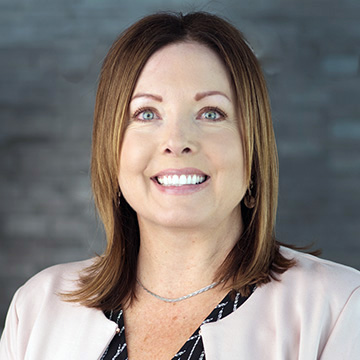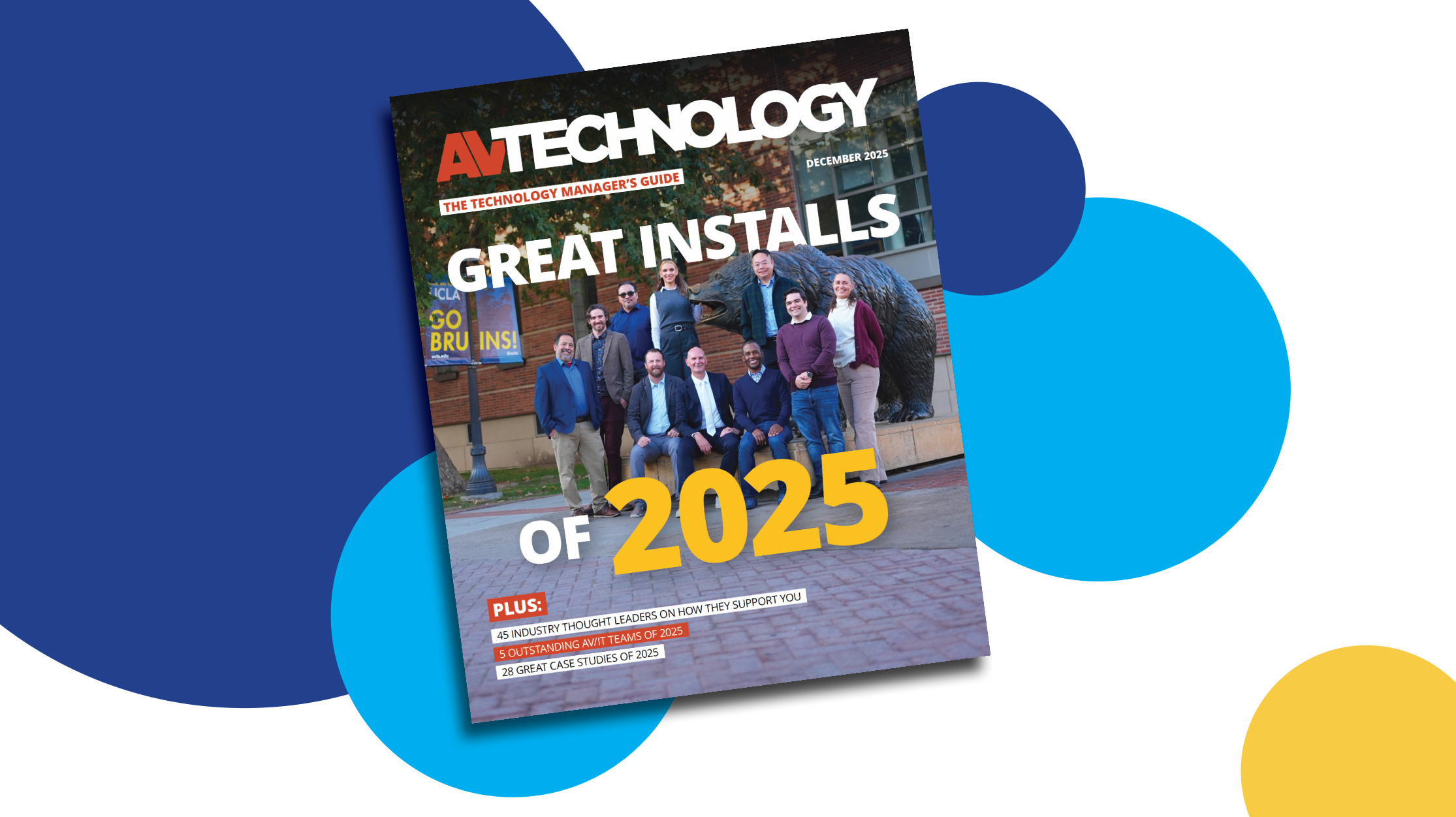Helping the Hard of Hearing
ADA standards and other factors need to be considered when integrating assistive listening systems.

As organizations step up their diversity, equity, and inclusion (DEI) efforts, it’s logical to presume that these same businesses and institutions strive to ensure they are accommodating people who are hard of hearing. But while the Americans with Disabilities Act (ADA) provides compliancy standards related to the deployment of assistive listening technology, AV designers are often challenged with striking the balance between providing what’s necessary according to the rules and what actually gets the job done.

According to Kim Franklin, vice president of global marketing at Listen Technologies, an assistive listening systems manufacturer headquartered in Bluffdale, UT, the ADA stipulates that if a space is reliant on audible communications (AV systems that deliver amplified audio via overhead loudspeakers or incorporate a podium equipped with a microphone, for example), then it requires assistive listening technology. This includes classrooms and lecture halls, as well as courtrooms and performance venues. “Private companies and commercial facilities that provide goods or services to the public are also required to make accommodations for those that need hearing assistance,” she added.

AV integrators need to consider a number of factors when designing assistive listening systems for their clients, noted David Missall, technical applications engineer manager and manager of consultant insights at Sennheiser, an audio solutions provider headquartered in Old Lyme, CT. These include:
• what the room will be used for (and what content will be presented);
• how many audio channels will be required;
• are translation capabilities necessary; and
• what signage will be necessary to inform users about the available assistive listening solutions.
A daily selection of features, industry news, and analysis for AV/IT professionals. Sign up below.

Missall also underlined the importance of addressing how PA systems will behave with assistive listening solutions. “If there is a PA system, then synching the hearing assist to the PA system is a must—especially if the audio is linked to video content,” he said. “Probably the biggest complaint from the end users is latency. The sound experience should be the same, if not even better, when using hearing assist.”
Compliance vs. Reality
The ADA provides guidelines on how many receivers facilities must have on hand based on capacity. In general, Missal said this is equal to 4% of seating capacity; so, if a venue has 100 seats, four receivers are required. A percentage of receivers must also have hearing aid compatibility, he added.
The problem with these guidelines is that in some cases, seating capacity isn’t a solid indicator of what is required on a practical level. “Even if we’re meeting the minimum requirement as per the ADA, we might need more than the minimum depending on the use case of the venue,” said Jonathan Owens, CTS-D, senior associate, audiovisual in the Chicago, IL-based office of Shen Milsom & Wilke, a consulting firm specializing in acoustics, AV, IT, security, and medical equipment planning.
While schools—which often answer to state agencies that have their own compliance standards—tend to go above and beyond the baseline requirements, private companies often try to get away with implementing the bare minimum. For consultants like Owens, this sparks a deeper discussion about compliance standards versus a facility’s actual needs.

"If it’s a corporate gathering space, or a seminar space, or a town hall meeting room where you’re going to have a lot of people, the challenge on our end is trying to convince them [they may need more than the bare minimum] or at least give them the right information to make a decision,” Owens said. “We’re trying to negotiate [that] you need to spend more money on this system that may never be used, but it’s better for your end users in those instances where you do have more people that need assistive listening.”
System Choices
Owens argued that hearing induction loop systems continue to be the gold standard in assistive listening. In these systems, an induction wire is hidden around the perimeter of the space (either under the carpet or concrete floor, or along the middle of the wall at about chair height). A microphone captures the sound, which is then boosted by an amplifier and delivered to the induction wire. People with hearing aids featuring T-coils (or telecoils) can then pick up the audio wirelessly.
The issue with induction loops, Owens acknowledged, is that they are pricey. “They tend to be a lot more expensive than traditional RF-based or IR-based systems, so a lot of clients aren’t really installing those,” he said.

Audio streaming over Wi-Fi systems that adopt a BYOD (Bring Your Own Device) approach continue to grow in popularity, whereby users access the desired channel on their personal mobile devices and listen to the content via their own earbuds or headphones. “The BYOD concept is catching on with guests and venues because more and more guests already have a smartphone, and it’s less equipment for venues to purchase and maintain,” Franklin explained. Still, to be ADA compliant, facilities must also provide physical receivers. “We recommend they have some on hand to checkout if needed.”
[Listen Up: Listen Technologies Supports Tours with ListenTALK at InfoComm 2022]
Listen Technologies’s Listen EVERYWHERE solution enables users to stream audio over a facility’s existing Wi-Fi network to their smartphones. (It also allows organizations to brand content to offer things like welcome videos and banner ads.) ListenIR, as its name suggests, is the company’s infrared solution, while ListenTALK allows groups of people to conduct two-way communication.
MobileConnect is Sennheiser’s streaming over Wi-Fi solution, which also lets users leverage their personal mobile devices. The system may be networked across corporate or higher ed campuses, for example. Third-party plug-ins assist in generating the associated signage content, so users can obtain the necessary access codes to login to the stream of their choice. MobileConnect also provides users with EQ settings so they can personalize their mix.

For assistive listening systems to be effective, it’s important that the audio delivered to them is solid, argued Nick Mitchell, vice president of the sales support group at Diversified, a global technology solutions provider with headquarters in Kenilworth, NJ. This means reducing background noise as much as possible.
“If the audio isn’t clean, then it just makes the signal coming in more noisy and less intelligible,” he said. “It’s really critical, when we go through our commissioning effort in the field, to make sure that our audio is good for the in-room speakers.”
[SCN Hybrid World: Look Up, Listen Up with These 9 Ceiling Mics]
While the pandemic forced AV designers and integrators to approach many spaces differently, Franklin said she doesn’t believe that the practices associated with assistive listening changed during the pandemic. That said, COVID-19 has served to create more awareness about the challenges that people who are hard of hearing face.
Physical distancing and masking (which resulted in muffled speech and prevented people from reading lips), for example, demonstrated how important—and, at times, how difficult—it is to adequately hear one another. “If anything, I think the pandemic brought the challenges the hard of hearing face front and center, and made people more aware,” she said.
When Portable is Perfect
Jonathan Owens, CTS-D, senior associate, audiovisual at Shen Milsom & Wilke, would like to see portable assistive listening systems become more elegant. He said this would give facilities greater flexibility, while at the same time reducing costs.
“We’re seeing a lot of multipurpose spaces and classrooms that may not need a permanently installed assistive listening system," Owens explained, "but they might get a student or two every other semester who needs something in a room that doesn’t have an assistive listening system." Right now, he and his team address this by specifying transmitter boxes for each room, as well as a pool of receivers that can be distributed as needed.
Instead of a large headset and intrusive microphone (like many tour guide systems feature), Owens envisions a more concealed lavalier or head mic with a transmitter that the presenter may wear around their neck. “What we’d like to see is something like a tour guide system, but [one] that’s more tailored toward assistive listening,” he added. “That transmits directly to the receivers—you don’t need anything plugged into an audio DSP or into the speakers in the room. It’s just a portable, point-to-point type system."
Carolyn Heinze has covered everything from AV/IT and business to cowboys and cowgirls ... and the horses they love. She was the Paris contributing editor for the pan-European site Running in Heels, providing news and views on fashion, culture, and the arts for her column, “France in Your Pants.” She has also contributed critiques of foreign cinema and French politics for the politico-literary site, The New Vulgate.
